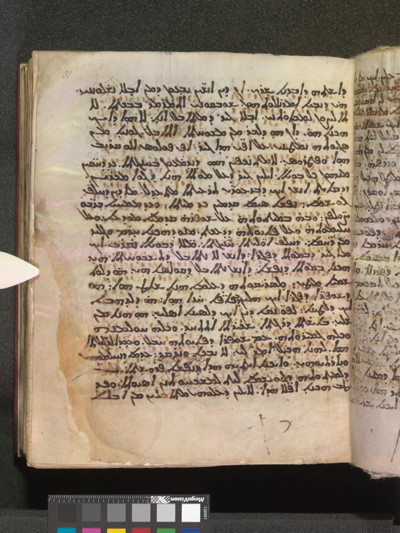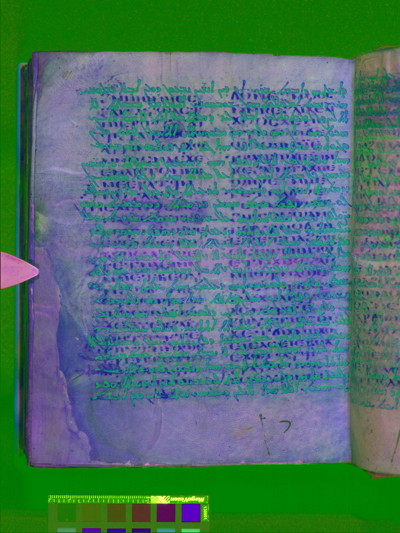 For my current research on the biblical Book of Ruth, I had to check the palimpsest codex Add 17183 in the British Library, London. This parchment manuscript with two superimposed layers of writing originated in the monasteries of Scetis in Lower Egypt and was worked on on two occasions: the original manuscript from the 7th century CE contained Coptic biblical texts from the Old Testament including the Books of Joshua, Judges, Ruth, Judith, and Esther. Three centuries later, the codex was rewritten in Syriac with a selection of sayings and writings of the Church and Desert Fathers.
For my current research on the biblical Book of Ruth, I had to check the palimpsest codex Add 17183 in the British Library, London. This parchment manuscript with two superimposed layers of writing originated in the monasteries of Scetis in Lower Egypt and was worked on on two occasions: the original manuscript from the 7th century CE contained Coptic biblical texts from the Old Testament including the Books of Joshua, Judges, Ruth, Judith, and Esther. Three centuries later, the codex was rewritten in Syriac with a selection of sayings and writings of the Church and Desert Fathers.
Nowadays, the underlying Coptic text is invisible to the naked eye. However, multispectral imaging has proven to be a promising technique in palimpsest manuscripts, and a cooperation between our project and the British Library was initiated – especially with Ilana Tahan, Lead Curator, Hebrew & Christian Orient Studies, and Christina Duffy, Imaging Scientist.
 The results have been amazing. The multispectral images provided by the British Library have made the Coptic text visible and readable to a very large extent by fading out the Syriac text. This has been of invaluable importance for our work.
The results have been amazing. The multispectral images provided by the British Library have made the Coptic text visible and readable to a very large extent by fading out the Syriac text. This has been of invaluable importance for our work.
After obtaining these marvellous results the idea of a joint „showcase“ arose and was immediately realised. You can find out more here: https://www.bl.uk/collection-items/Coptic-Old-Testament-Book-of-Ruth
On the website you can choose between three views of the manuscript: the “Normal View”, the "PCA View" (showing the multispectral images) and the "Transcript" (Coptic transcription).
The „Digital Edition of the Coptic-Sahidic Old Testament“ hopes to continue this fruitful cooperation with the British Library for its mutual benefit to both institutions. I would like to use this opportunity to express my thanks to the British Library team: Ilana Tahan, Christina Duffy and the IT specialist Richard Power – as well as to my colleagues Chrysi Kotsifou and Malte Rosenau for their support in this project.
 Blogs
Blogs  Recent Bloggers
Recent Bloggers 




